Poignant anniversary of the shocking Silvertown Explosion – an ‘accident waiting to happen’
One hundred years ago saw an event in Silvertown’s history that many believed was “an accident waiting to happen”.
In this special edition of londonsroyaldocks.com’s Forgotten Stories section we remember The Silvertown Explosion through the eyes and ears of relatives and friends of those who were about on the fateful day, and those who remember the stories of the horrors that were passed on to them.
Brunner Mond had established a factory at Crescent Wharf in 1893 to manufacture soda.
Two years into the First World War, the Army was facing a crippling shell shortage. The War Office decided to use the factory’s surplus capacity to purify TNT, a process more dangerous than manufacture itself, even though the factory was in a highly populated area. With the enormous demand for munitions it was decided to use it for TNT purification, despite the dangers and opposition from Brunner Mond, from 1915.
Their fears became a reality at 6.52pm on January 19 when a fire in the melt-pot room caused an explosion of 50 tonnes of TNT.
The TNT plant was destroyed instantly, as were many nearby buildings, including Silvertown Fire Station opposite. Much of the TNT was in railway wagons awaiting transport.
Many buildings in the immediate vicinity, including Vanesta’s plywood factory as well as streets of houses were destroyed in what is still regarded as the biggest explosion in London.
Fires raged in the nearby flour mill and on ships in the dock. Silvertown Lubricants Oil which stood on a site next door, was ravaged. Around 70,000 properties were damaged and the red glow in the sky could be seen for miles around.
The final death toll was put at 73 and those injured numbered 400, but these figures have always been thought to have been an underestimate.
Among the dead was Dr Andrea Angel, an Oxford professor doing voluntary war work as the plant’s chief chemist. He was attempting to help put out the fire when the explosion happened.
- Dr Angel : Picture: Newham Archives and Local Studies Library and Senior Common Room, Christ Church, Oxford
West Ham MP Lyn Brown, who grew up in Silvertown, said: “My nan Catherine Oates, who was known as Katie, lost her left arm in the explosion. She was hurt as she was walking down the street when the blast occurred. Her brother was killed in the disaster.
“And a young Esther Wilson – an amazing woman who was the local Brownie leader from Silvertown lost her sight. She was a teenager at the time and her sight was damaged and eventually she went blind.
“She went away to learn braille and was still able to run the Brownie group in St Barnabas Church in Silvertown and later St John’s Church in North Wooolwich. She was my Brownie leader and taught generations of local children the correct values in life. She was an amazing woman.”
Esther’s plight was also remembered by Joan Plant, aged 90, who still lives in the house in which she was born in North Woolwich.
“I understand that Esther was blinded when she was being carried along the street by her mother – she was a babe in arms and they were blown up in the air by the force of the blast. She lost her sight a year or two after, but went on to lead a remarkable life,
Joan, was often told about the explosion by her mother Florrie, who was born Florrie Larkins. Her father Fred Plant, was away in India on National Service at the time of the fatal explosion.
Her mother was working “over the river” at Woolwich Arsenal as a lathe operator at the time as part of the First World War effort.
“They often worked late into the night preparing vital items, like shells for the troops.,” said Joan. The complex had two huge solid iron gates.
“Mum told us how these were blown shut by the force of the blast. It was incedible. But as they came home that night the women weren’t allowed to go into that part of Silvertown. Having come through the Woolwich tunnel they were told by police to go straight home and stay indoors.
“There were nothing official about what had happened. Everyone was frightened that the explosion may have been down to the Germans and they were fearful of what might be about to follow in the hours, days and nights ahead.”
It was only as the days passed that the full scale of the disaster became apparent.
Joan revealed that her church, St. Johns in Albert Road, Silvertown, houses a memorial wooden plaque for those who died in the disaster. On a visit to the church, we found it is in remarkable condition, having been made 99 years ago, detailing how St Barnabas Church in Silvertown, was destroyed, but giving thanks to God for saving the lives of all the children who were in the hall when the building collapsed.
* The plaque inside St John’s Church, North Woolwich. Picture: Colin Grainger
Joan said: “Mum would tell us about people who were walking along the road getting blown off their feet and killed or being badly hurt. Because of the German sounding name of the factory, all kinds of rumours began to circulate about who or what was responsible. Anyone with a German sounding name was seen as suspect. Even the chemist Dr Angel was seen as a possible suspect for a time.
“Mum said it was so lucky that the blast had not happened during the day time when the other factories and the school would have been occupied, “ added Joan.
St Barnabas Church and hall were among hundreds of buildings destroyed.
- The damage inside St Barnabas Church. Picture: Newham Archives and Local Studies Library
She said rumours were rife that a tall suspicious looking man had been seen acting strangely near the factory, shortly before the blast, there were some reports that he was seen inside the grounds.
“The community never found out what really happened. When the war ended certain stories trickled out but it took 50 years for the truth to be revealed. There were restrictions on what the press could say, just like there was in the Second World War. Mum said the fear that something like it could happen again never really left them.”
Joan saw many changes in the community growing up but it has always been the view of locals that the explosion was “ an accident waiting to happen.”
“Having something like that in our community was ridiculous. And let’s be honest, the lessons were never really learned. Look at what we had on our doorsteps 23 years later in The Blitz. So many factories with inflammable materials, were still located in the area.
“And 16 out of those 17 factories running parallel with the Albert Road were bombed. As Silvertown, North Woolwich and Canning Town and Custom House took more bombing than anywhere else in London.
Back on the fateful night, in every street around Silvertown, groups of people, dazed by what had happened, and many suffering seriously injuries surveyed the ruins of homes and shops. Rescuers used their own clothes to wrap around the injured in the cold night air.
There were many courageous acts that night that have been remembered over the 100 years that have since passed.
Former North Woolwich Pc Alan Godfrey worked as the local Home Beat officer for over 30 years until he retired in 1993 and helped many local youngsters with school projects on the explosion with some records that were once stored in the former police station.
Now 78, Mr Godfrey talks with great pride about the heroism of former officers who died in the line of duty.
“Two officers stationed at North Woolwich during the time of the explosion gave their lives. One, Sidney Newbury Pc 975K was killed in action at sea 16th September 1918. He was a Royal Marine, who served in the First World War. The other in the Silvertown Explosion.
“The self sacrifice of PC 389K George Greenoff was incredible. He was on duty outside the factory when the fire broke out. He remained at his post to warn others of the dangers, as the explosion was imminent,” said Alan.
* Pc Greenoff: Picture: Newham Archives and Local Studies Library/ Alan Godfrey
The Police Review of February 1917 added to the story of his heroics.
It revealed: “Pc Greenoff got many people out of the burning building and prevented a stampede. Regardless of his own personal danger he devoted himself to duty. In this he was heroically occupied when the terrible explosion occurred.”
Mr Godfrey said: “He was struck on the head by a large missile and died in hospital a few days later. The message from the King sent to his family and colleagues at the time was said to have given those that were left in service the inspiration to carry on and that he did not die in vain. The 30-year-old Pc was posthumously awarded the King’ s Police Medal.”
The Watts Memorial to Heroic Self Sacrifice in Postman’s Park, Central London, also commemorates, Pc Greenoff, who helped to evacuate the factory. When that explosion did happened, the head injuries he suffered proved fatal. He died nine days later.
At the time of his death, Pc Greenoff, who lived in Rhea Street, North Woolwich, had an eight-year-old son, Edward, who would later become a police officer himself.
And one day wile serving at North Woolwich nick, Alan got the surprise of his life – and learned so much more about one of the heroes of the Silvertown Explosion. Edward walked into the station as part of a trip see the area again for himself and talked Alan through his father’s life.
“He told me how his father had been in the Navy before the war and at this time, the famous explorer Captain Robert Falcon Scott was planning a reconnoitre mission to the South Atlantic to prepare for the mission to the South Pole in 1910-12.
“It was to suss out exactly what they needed and George Greenoff became part of it.
“He received the Bronze Polar Medal for his service, and his son came to tell us about it. He was living in a cold place on the Isle of Sheppey and my wife and I went to visit him. He was looking to sell the medal to raise money to help him survive. I did not have the authority to buy it on behalf of the police, but told him I would get back to him.”
Later Alan found that his son had sold the medal to a museum in New Zealand, where it went on display.
“When Edward Greenoff returned from the South Pole to England and the Navy he was asked, according to his son, what career he was now interested in, and as a result, he was taken on as to serve in the police. The rest, as they say, is history and he became a true local hero.”
- The Memorial to the victims on its original site. Picture: Newham Archives
I tracked down the original memorial laid to mark the deaths of those who lost their lives. We found it in the middle of the new Royal Wharf development in West Silvertown. It is still in remarkably good condition, with multi-million pounds homes being built around it.
- The Memorial which is now at the new Royal Wharf site. Pictures: Colin Grainger
The inquest into his death in the Explosion, revealed that Mr Greenoff had crawled some distance after regaining consciousness. Pc Cyril Roberts, who took his friend’s advice and went away to warn others, told the hearing that his heroism and devotion to duty saved his life.
I also tracked down another memorial featuring Pc Greenoff, and Pc Newbury, which is now at Romford Road, Forest Gate, at Forest Gate Police Station. A new stone was erected to mark the sacrifice of all K division officers killed during the First World War. Pc Greenoff, though not killed in War Service, was considered as much a hero for his devotion to duty as those who were drafted and killed in action.
- The Memorial at Forest Gate Police station: Picture: Colin Grainger
Factory worker George Wenbourne was posthumously awarded the Edward Medal for his efforts in trying to fight the fire, as was Dr Angel.
Firefighter Frederick Sell, 45, of Fort Street, Silvertown, and sub officer Henry Vickers, 49, also of Fort Street, were also killed fighting the fire and other colleagues injured.
- The headstone for the two firefighters killed in the blast and firefighters Vickers (top right) and (below) Sell
The London Gazette recalls: “On January 17, (a very serious incident took place) in Silvertown. West Ham Fire Brigade were summoned and on arriving with their engine were told to save themselves as they could do no good. Nevertheless, though well aware of the danger they began to couple their hose. The explosion took place blowing away their engine. Sub officer Henry Vickers and fireman Frederick Sell were killed and Station Officer Samuel Betts and firemen James Betts, Henry Chapple and James Yabsley were injured.”
- Station officer Betts and fireman Labsley…injured in the blast
The men were awarded King’s medals and other bravery awards and ribbons for their efforts.
Stan Dyson was brought up and lived in West Silvertown for many years. Stan, who now lives in Essex, continues to have a great affection for the area and those who lived there years ago. He recalls his Nan, Alice Guinee, telling him about the explosion.
Said Stan: “Having heard the huge bang and feeling the house shake, she opened the front door to a huge plume of fire and falling debris. But because we were in the middle of a war, the reason behind it was kept secret for many many years. It was referred to over the years, but like most of what happened in our community back then, people just seemed to move on and get on with it.”
- The plaque outside Silvertown Fire station : Picture: Colin Grainger
During our research for this anniversary piece, we discovered that a Newham theatre group staged a play about the explosion, 43 years ago. It was the idea of Gerard “Ged” Melia, the borough’s Inspector for Drama.
Terry Wilson, who was the headteacher of Regent Primary School in Custom House when the idea was first suggested in 1972, played a major role in staging it. He had also been deputy head at Storey Street Primary in North Woolwich.
It took a year of research, delving into the basement of council buildings in East Ham and Stratford for records of the disaster and local people who are now sadly passed away. The Newham Teachers Theatre workshop spent many months researching for the production, The Silvertown Disaster
“The stories resonated with us. The production focused on why so many shells were needed and had sections based over in France and took in the views of the generals and what munitions were needed to win the war.
“But in the research it was obvious how locals viewed how dangerous this was to have this factory in their community. We were even able to portray how a police officer came out to address and locals in the aftermath of the explosion to reveal what had happened and how he announced in the manner that you often hear: ‘I approached the scene and found….
“When we did that, an old lady in her 70s in the audience stood up and said:’That;s exactly how it was! I remember him.’”
- One of the house wrecked in the blast: Picture: Newham Archives and Local Studies
Terry’s research about his own school shows that it was shut for three weeks after the explosion because of the damage even though it was in Custom House and the explosion was in Silvertown.
“There were stories about the blast being heard as far away as King’s Lynn and a tale also emerged about an organist who was playing a big organ at the Finsbury Park Empire and the force of the blast blew him from one side of his seat to the other,” he said.
“We also discovered stories about the aftermath where soldiers were sent in to help casualties at Silvertown. They woke up to see soldiers wearing turbans, tending to them, a sight they had never seen before, as soldiers from other countries were called in to help.”
- Barking Road Wesleyan Church volunteers provided food for the homeless: Picture Newham Archives
He said: ““We found the mourning cards from 1917 and these were used in the play which involved around 30 teachers and deputy and head teachers. It was an improvised production – a docu-drama with music -which we performed around 20 times at local venues like schools, church halls and libraries and also at a librarians’ conference at Loughborough University.”
But the play had the most impact locally. The actors even used a small extract from the play Oh What A Lovely War, including a song from the First World War trenches with some colourful language.
“The head of Star Lane school, Miss Bull, was a little shocked to say the least,” said Terry.
The extent of the news blackout because of the event occurring in war time, and similar to the one concerning the bombing of Hallsville School in the Second World War, also became revealed in their research.
- The remains of the factory next door to blast site, Minoco. Picture: Newham Archives and Local Studies Library
“The Times only reported that the explosion had happened at a factory in London,”
Indeed, many of the facts were not revealed until 50 years after it happened, and the loss of life is still viewed by many today as being an underestimate.
- A memorial card produced to those who lost their lives. Picture: Newham Archives and Local Studies
In our quest to find others with stories, we received some comments from those with relatives living locally at the time.
Jan Ransen told us: “An ex’s father was born prematurely because of the explosion. His mother was standing on a chair cleaning something and the noise made her jump and fall. The baby was born into a bucket and originally prounounced dead. But he cried and revived. He lived until he was 81!”
Brenda Lacey said: “My mother’s father, my granddad, helped after the explosion and was awarded a medal for his services, a sovereign.”
John Ford said: “It just so happens that my late father was at Silvertown. He was less than one year old at the time and lived I believe, at number 1 Albert Street opposite the factory. The street no longer exists but even though the top floor was blown away, all my relatives living in that building survived the explosion. I was not aware of the explosion until I started researching my family history a few years ago.”
One woman, Sheila, revealed that her great aunt Elizabeth Preston, was killed in the explosion, along with her two small children George and Dorothy, and her mother-in-law. Her story is recorded on a website.
But she said: “They had just moved into a house close to the factory a week or so before, because her husband had a new job as a miller at a nearby flour mill and was required to live close by as presumably he worked shifts. She had not wanted to move there. They did not know what was being produced at the factory, so when the fire started they went out to watch, while most of the other inhabitants, knowing what was going to happen, were running away.
“It was dreadful for my grandmother, who was very close to her sister, who was four years older than her. They had been orphaned when my grandmother was four years old, and sent to the workhouse.
“Elizabeth had determinedly kept in touch with my grandmother even when they were separated – my grandmother being fostered out to Westmoreland and Elizabeth sent into service. Elizabeth’s husband was at work when the explosion occurred and was unhurt. He must have been heartbroken to lose his entire family like that. All the compensation they received was £10 to cover the cost of the burials.
“He subsequently asked my grandmother to marry him, but she turned him down. I have tried to locate the burials, which my mother insisted were in the City of London cemetery, but have not been able to find them.”
- Aerial view of North Woolwich Road after the explosion: Picture: Port of London Authority
Keith Lloyd lived in West Silvertown for 24 years. Keith has written two short stories about the explosion in which he recalls asking his mother, Ivy Orley what she remembered about it.
In the first story, Weapons of Mass Destruction he said: “Ivy, then four, was at home on Cranbrook Road with her mother (Agnes Orley) when they heard the first explosion). They ran to hide under the stairs. Ivy recalled the ‘walls coming down like jelly’ as the explosion hit their house as she watched through the gap in the doorway.
“The house was destroyed to rubble and they could not get out. They were found by the eldest son Bob, who had been sent out to get some bread…he ran home to find the house in rubble and his mum and sister shouting for help. Astonishingly, as soon as she saw her son, Agnes asked, “where’s the bread?”
As a consequence of the damage to the house, the family had to find somewhere to live and had no alternative but to split up. Keith’s mum went with her mum to live with an auntie and the other children went to another distant family member.
- One of the emergency relief centres set up after the explosion. Picture: Newham Archives and Local Studies Library
Keith’s father and grandfather also had memories about the explosion.
In Keith’s second short story, The First Tea Party, his said that his grandfather Ernest Lloyd senior, 35 at the time, was ‘blown down the street’ by the explosion.
“His son, my father, referred to at the time as Young Ernie, was six when he was injured by the blast. He was waiting to go inside for his first tea party given by the scouts in the Methodist Church Hall in North Woolwich Road.”
He had seen “posher kids” going into the party and thought he would feel out of place and was in two minds waiting to go in, when a voice said that Sister Vera was calling him.
Then he said… “Suddenly it happened. A huge pink semi-circle cloud appeared in the sky, bigger then any of the surrounding buildings and as I watched the top of the semi-circle opened up to send red, yellow and black smoke belching upwards.
“I remember thinking ‘the sun must have fallen out of the sky.’ I turned to run but there was an enormous explosion and I felt myself being lifted as if by a giant hand and propelled forward (I thought) at terrific speed. My ears were full of rushing wind.
“Then, as suddenly as it started, it stopped and I felt my body drop and hit the roadway very hard. I lay still for a while. Then, lifting my head a little, I could see people being blown about like blackened cardboard. Three women who had been walking towards where I was lying were suddenly mown down. One leaned against the shutters of the butcher’s shop holding her left elbow in her right hand and looking down at where her hand should have been. The second was sitting on the foot path and the third was lying in the gutter. I saw a man lifted off his feet by the blast and thrown, with a tremendous force into a doorway.
“I remained still for some time but then I heard something. I turned over and saw a headless woman. Then I thought ‘that may be my Mum’ and this was the moment I became panic-stricken. I got up and ran about madly. It seemed I had been running about for hours, when I heard someone calling urgently, “Jessie, Jessie, here he is”. Jessie (my Mum) was being called by my aunt Gladys, who just could not hide the elation in her voice. “He’s all right Jess not hurt”. Then I saw my Mum coming towards me carrying my younger brother John aged two.
She said, “I’ve been to the Chapel and they told me you had not been there. I told your father you must be still in your bedroom changing your boots”. When my Dad went back to the house he found the bedroom had been devastated.” They were taken to a church to be treated for their injuries.
- Firefighters at their station a few days after the explosion
After watching the funeral processions for the firemen, policemen, soldiers and civilians killed in the explosion, we were told that the children were to be prepared to move on Tuesday to a big house in Swanley, Kent. This was to be our home for the next eight months, said Keith..
“After being away for eight months we all enjoyed the journey back to Silvertown sitting up front on the brake eating the apples and we had been given. When we pulled into Westwood Road we were all singing our heads off. There was a crowd of people waiting for us outside St. Barnabas Church. But when I got there, I was disappointed- all the guns were gone as was (part of) the flour mills owned by Joseph Rank. They had all been blown to pieces..
In September we were told that a number of children were being sent to the countryside to get some fresh air. I didn’t want to go. I wanted to stay at home. But I had no choice and Wally and I, together with Archie and Wally Cole, were soon on our way to Wokingham to be billeted with Mr and Mrs Challis.
“We were away for almost a year. It must have been August 1918 when we returned home because I recall having been back at school for just two weeks when I was sent into the big boys section and then marched into the playground to listen to all the factory sirens and ships hooters blasting away, signalling the end of The First World War.”
- Damage caused by the explosion: Picture: Newham Archives and Local Studies Library
Throughout the 19th century Silvertown was a hub for industry. historian Graham Hill, who co-wrote with Howard Bloch The Silvertown Explosion: London 1917, said: “It was said that by the turn of the century every household in the country owned or had at least one product that had come from Silvertown.”
Said Graham: “The Minister of Munitions, David Lloyd George, said two years before the explosion: ‘Even after utilising every workshop and factory capable of turning out munitions, we found that output would be inadequate unless we supplemented our resources by setting up emergency buildings.’ ”
Despite warnings from Brunner Mond’s chief chemist at the time, Dr Francis Arthur Freeth, that there would be a catastrophe sooner or later, the Ministry of Munitions believed it was worth taking the risk and the factory began TNT production in September 1915. Another chemist, Dr Andrea Angel, was drafted in to help oversee the production and guide the workers who were inexperienced in chemistry.
Graham Hill said: “People all over London heard the explosion and felt the blast, which damaged between 60,000 and 70,000 properties, and saw a red glow in the sky that was visible for miles around.”
The surrounding areas were practically obliterated by the blast, with fires breaking out in nearby building and residential streets demolished by the impact, with reports stating that the blast was heard as far away as Norwich. At the time, firefighter James J Betts and his colleagues went to the factory to put out the initial blaze but were sent 200ft through the air when the TNT exploded.
- Devastation…wrecked homes. Picture: Newham Archives and Local Studies Library
“Around me was a vast plain of rubble. The factory had gone. There was fearful sounds in the air, the screams of injured women and children, the groans of those imprisoned under the debris,” James recalled.
The government paid out £3m in compensation, around £40m in today’s money, and had to provide temporary shelters for hundreds left homeless.
The tragedy featured in an episode of the ITV programme Upstairs Downstairs (the Downton Abbey of the early seventies). Ruby, a former servant had gone to work at the munitions factory and having survived the explosion returned to her former employer at Eaton Place. She was made up with a canary yellow complexion that was said to be the result of working with TNT and Nitric Acid.
A memorial to the victims was originally erected in North Woolwich Road. But as we revealed earlier, it is now in the middle of The Wharf development.
*******Eastside Community Heritage are staging an evening exhibition of photographs and memories on January 19, from 6pm, with a talk by Graham Hill and will include a moment’s silence in honour of those who lost their lives at the time of the explosion.
This will be at St Luke’s Church in Canning Town. More on their website at http://www.hidden-histories.org.uk/wordpress/
******* A commemorative event is also being planned at the Royal Wharf Development. The private memorial event will be attended by families of the victims, Newham Mayor Sir Robin Wales and Sir Hugo Brunner (great-grandson of JT Brunner, chairman of Brunner Mond, the company on the premises of which the explosion took place. The event is private for health and safety reasons as it is being staged on a construction site. Displays are also being staged by Newham Archives and Local Studies Library and these are expected to go “on tour” around the borough’s libraries. on dates to be announced.
***** The Museum of London will release a newly digitised photography album of 24 images taken by John H Avery. These images were commissioned by the Port of London Authority to document the damage done to PLA property so they could ask for compensation from the government. These images are a unique resource and have never been digitised before. They are very haunting images and are newly released material from their archive.
Pictures: With thanks and credit to: Newham Archives and Local Studies Library, Colin Grainger, Port of London Authority
All the stories in the #ForgottenStories series can be found here:
http://www.londonsroyaldocks.com/forgotten-stories/
Following the many kind words expressed following the publication of the pieces on the 100th anniversary of the Silvertown Explosion in the #Forgotten Stories series on London’s Royal Docks website’s online archive on January 6 , it was a pleasure to receive an email from the gardeners who look after the memorial and the showcase garden where the memorial now stands at Royal Wharf London site in Silvertown.
Darren Upton wrote and said: “I subcontract to Ballymore at Royal Wharf, and I work on the showhouse garden where the memorial now stands.
“I am one of a team of gardeners from Kings Landscapes in Milton Keynes who look after the gardens.
“We are all fully aware of the one hundredth anniversary, and we take looking after memorial and surrounding gardens very seriously and treat the memorial with the utmost respect keeping it clean and tidy.
“I know Ballymore are very conscious of the memorial’s importance and are fully aware of the anniversary. We will continue to look after the memorial and gardens and honour the people who lost their lives.
“Kind regards Darren Upton.”
When I visited the site to take pictures I remarked to the showhouse representatives how impressive the gardens looked and the memorial
Video tribute uploaded January 16
https://www.youtube.com/watch?v=mb6DYzxi5Qw&feature=share


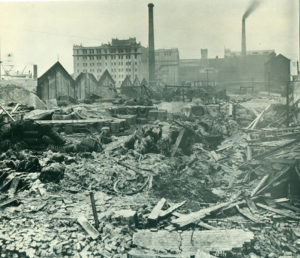 Picture: Newham Archives
Picture: Newham Archives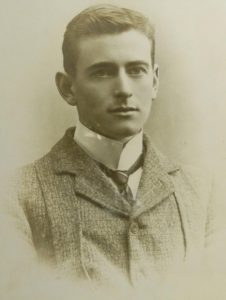
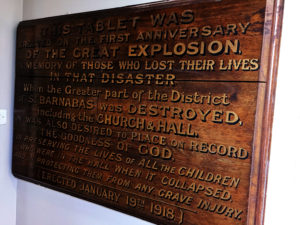
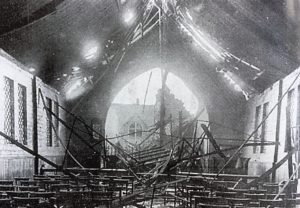
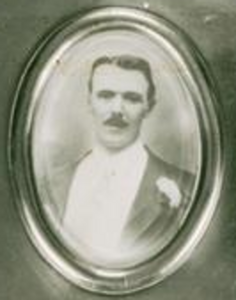
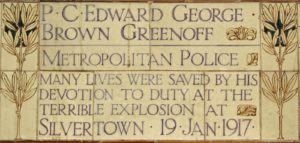
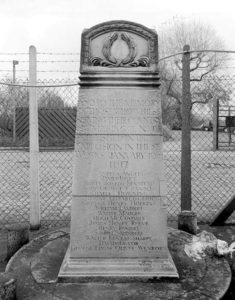
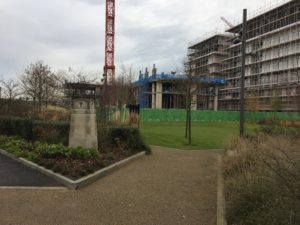
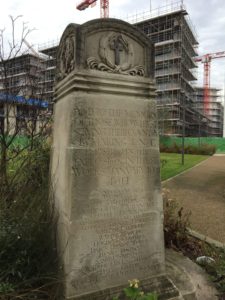
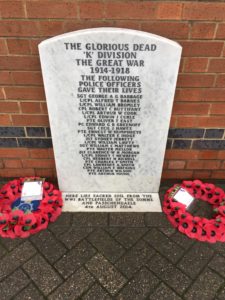
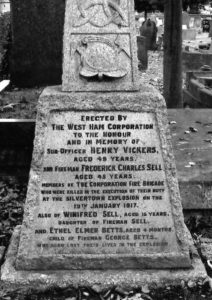
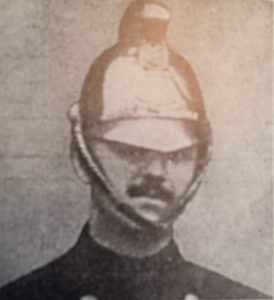
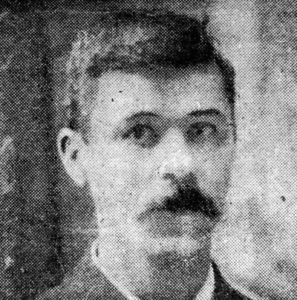
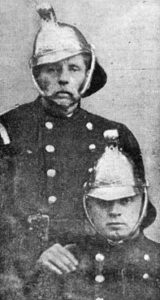
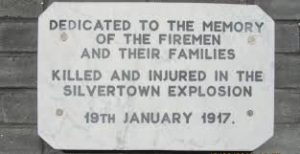
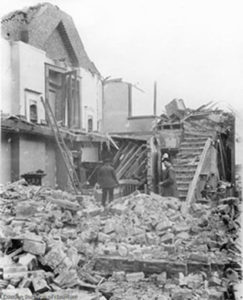
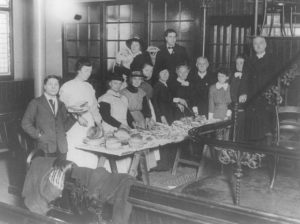
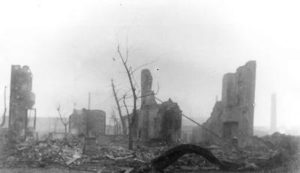
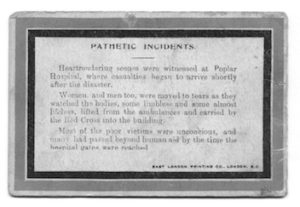

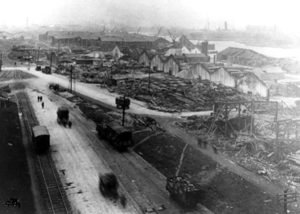
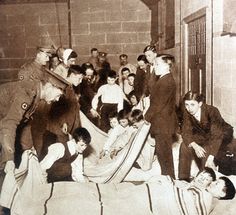
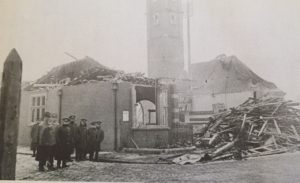
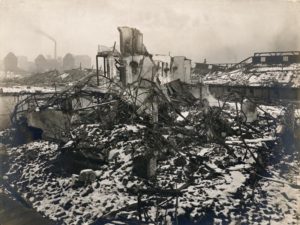
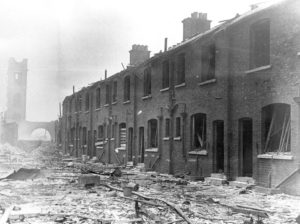
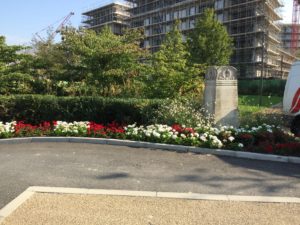
[…] the same high explosive used in the shells that destroyed dozens of French villages. Some very moving accounts of bravery and suffering have been gathered recently. Photographs of the torn girders among the […]
[…] the same high explosive used in the shells that destroyed dozens of French villages. Some very moving accounts of bravery and suffering have been gathered recently. Photographs of the torn girders among the […]
[…] the same high explosive used in the shells that destroyed dozens of French villages. Some very moving accounts of bravery and suffering have been gathered recently. Photographs of the torn girders among the […]
The Picture that you have used of Andrea Angel is copyright the Senior Common Room, Christ Church, Oxford by the way!!
Can anyone throw light on a Tale and Lyle manager called George Bull who shut down the boilers and so averted an even bigger issue. He was awarded a medal I believe.